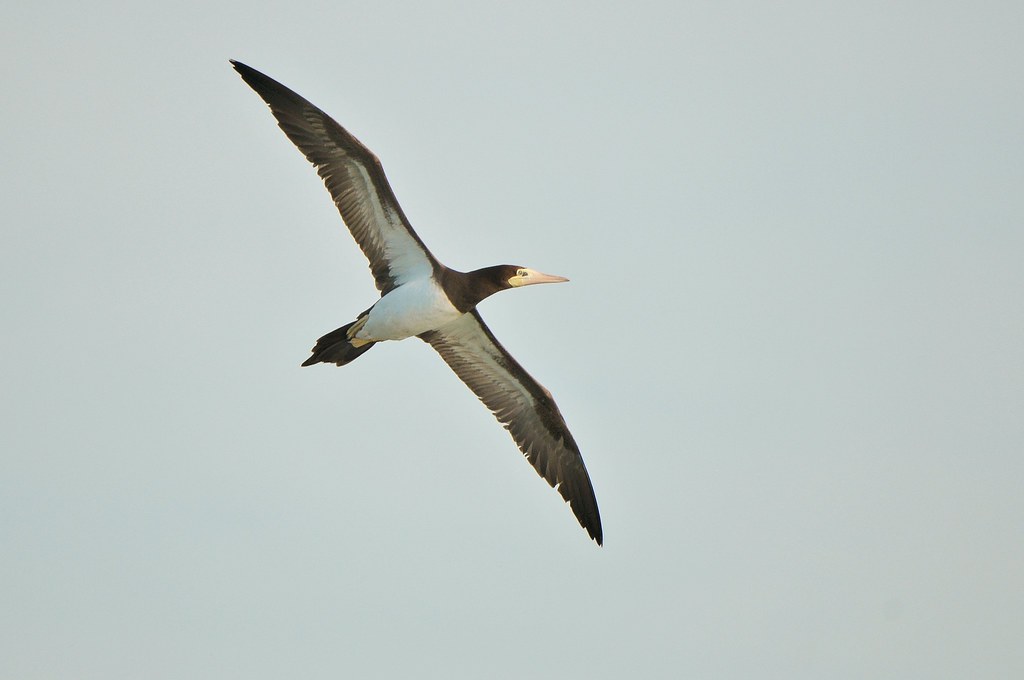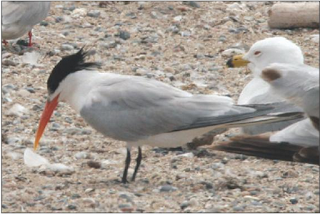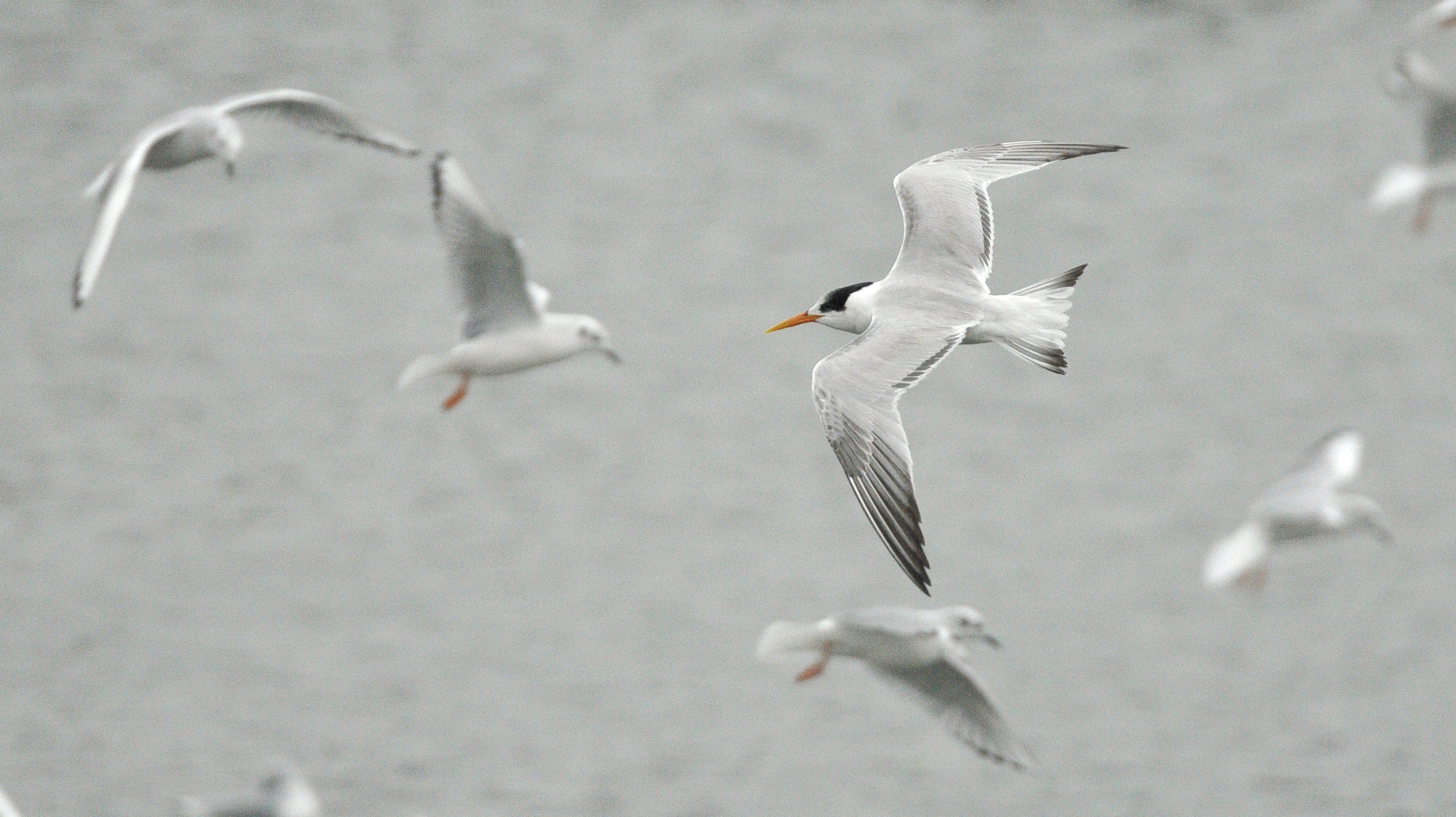If imitation is the sincerest form of flattery, what is blatant infringement on intellectual property? Following the lead of one Amar Ayyash, I've written a blog post about my top 20 all-time favourite gulls! If I may;Some were picked based on "rareness", some because of the stunning plumage being worn, and some simply because I'm fond of the circumstances involved in taking that photograph.... Do enjoy...
(75% are my favourite individual gulls, but I couldn't help but add a few favourite photos too).
#20 -
This obliging Sabine's Gull was a dream come true- only a few feet away and all to myself! Taken in Buffalo, NY in October 2008, I actually blew off work two days in a row... Since that time I've been lucky to photograph several; but you never forget your first.
19 -
The rare shade of gray via the St. John's, NL Yellow-legged Gull. I was there. I saw it. It was actually a bit of a pain; and took me nearly two weeks before I finally had my first views of the beast. It was worth it.
18 -
Slaty-backed Gull may well be my Ontario nemesis; and it doesn't help that I "found" one in Newfoundland a few days after arriving... Maybe it's just easier out there? Or maybe they hate me? ;) ... Regardless I was happy to get some quality images of the beast during my stay.
17 -
An odd addition to this list, I found myself working on my birthday (not the first or last time) and ended up watching/photographing this Herring Gull catching fish in a wicked SW wind for hours... It was oddly entertaining.
16 -
A favourite photo more than anything - this beaut was once published as a two page spread in a fairly sizable book and (in my humble opinion) turned out great. An odd affinity for northern species help make this work...
15 -
After failing to photograph the mythical Great Black-backed X Glaucous hybrid while in Newfoundland, I wasn't crazy about my chances at getting some in Ontario. A first year bird wasn't even on the radar. When I had this bird and was thrilled to get the shots!
14 -
This gull is awesome. I think it's a Herring X California Gull hybrid; but it sure looks a lot like a California Gull... At the time; I'd never found a Cali-gull in Ontario - and was actually dissapointed. Now I've found several Cali's, and may never get to enjoy this rare hybrid again!
It's a Glaucous-winged Gull! It'd be the first provincial record, had it not been rejected. Maybe it'll be accepted someday though! Then it'd be a first provincial record! Can't be too sad about it though, cause it took me five years to identify it :O
12 -
No affinity for the birds, but always been fond of the image. The burgomaster vs. the king of the gulls. Mano a mano. Boom. (Glaucous & Great Black-backed).
11 -
I wasn't sure where to fit this bird into the list. I have no particular affinity to the bird itself... It was feeding on rotting garbage... But it is a rare hybrid (Herring X Lesser Black-backed Gull; Appledore Gull) AND I saw the SAME BIRD two years apart right around the SAME TIME). Check it out: 2nd basic, 3rd basic.... (Not only that, it is the two rarest plumages). Pretty neat stuff!
10 -
These Black-legged Kittiwakes were seen on October 29th, 2012. October 30th will never be forgotten, but I was STOKED to see this group (especially the 2nd basic) pass right along the beach at Van Wagner's the afternoon before. It was proof that my weather/bird predictions for Hurricane Sandy may be coming true, and that it was only going to get better. (It did, 13 gull species in 2.5 days). I was so excited I barely slept that night.
9 -
My west coast buddy. I had the chance to do some near-shore pelagic work in 2013 and 2014 near Prince Rupert, BC. The exposure to west coast gulls was a phenomenal experience; with my single favourite gull moment coming from my "buddy" Glaucous-winged Gull that would land on my arm and eat out of my hand. He/she found us more than once (in totally separate locations) and came in to say hi without hesitation.
8 -
A "pet" Sabine's Gull? Yes please! I can't be sure, but I suspect I "tamed" this one juvenile Sabine's over multiple days out on Lake Ontario one September. By the last day, I drifted on calm-as-glass-water, feeding tiny handouts to my Sabine's friend - down to 5-10ft away. Freakin fantastic.
7 -
Chocolate Milk!!! - yes this Thayer's Gull as a name (so does the next). Found by Peeter Musta, these birds were feeding at a nearby landfill - then roosting in PARKING LOTS at a developing power centre. The viewing/photography was amazing, and I went back multiple times a week enjoying the birds. These two Thayer's Gulls stole the show!
6 -
DARKZILLA!!! The second beast found by Peter Musta in Kitchener, Ontario... I enjoyed another "single season" hotspot for gull photography in 2012. Oh gull hotspots, why don't you ever last? This is probably the darkest juvenile Thayer's Gull I've seen (especially for the time of year) and was thrilled to get a bunch of photos. They also set off Thayer's Week on the blog :)
5 -
This is more of a "favourite photo" and a "memorable location" than anything. The now-defunct Waterdown Gull Garden Supplies was a compost production facility that I visited three to four times a week (at peak times) and gorged myself on close-range gulls. It was close to work and birder friendly... How I miss those times. (2nd basic "Kumlien's" Iceland Gull)
4 -
This gull (a Nelson's Gull - Herring X Glaucous hybrid - 3rd basic) was massive. Straight up. Check it out if you don't believe me. It may well be the single largest gull I've ever seen (larger than Great Black-backs). I've got a soft spot for hybrids in general, yet this beast was really memorable.
#3 -
Hamilton, Ontario. 2003
This bird was the reason I started my website! At the ripe age of 16, I was already quite fond of ugly gulls - and this bird really pushed things into overdrive. The response was all over the map, and I still don't feel confident in calling it anything... Talk about excitement!
#2 -
Port Burwell, Ontario. 2009
It is a rarity-hunters dream to find "first record" type birds, and I was hoping to find a first provincial record at some point in my "birding career". Lo and behold it happened when I was 22, and was a striking gull species (Black-tailed Gull). Doesn't get much better! We only had a few short hours together, braving 120kph wind gusts and driving rain, but dang they were memorable.
#1 -
Goose Cove, Newfoundland, 2010
A single photo to represent a "gull event" - 111 different Ivory Gulls in a single week. My Ivory Gull gallery would have taken up all 20 places on this list if I were doing "favourite photos" only... This image captures the beauty of the birds, the beauty of the scenery, and serves as a reminder of how amazing the entire event was!





































